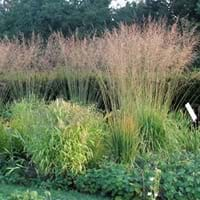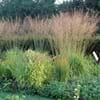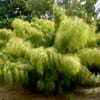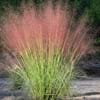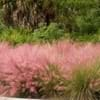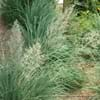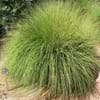What is
Life Span
Perennial
Perennial
Type
Grass
Shrub
Origin
Europe, Eastern Europe, Southern Europe, Russia/Siberia, Asia, Central Asia, Southern Asia
North America, United States, Northeastern United States, Mid-Atlantic United States, Southeastern United States, Canada
Types
Not Available
Red chokeberry, Purple chokeberry
Habitat
Boggy areas, Dry and Young forest Heaths, Lowland
Anthropogenic, Boggy areas, Cliffs, Fens, Swamps, Terrestrial, Wet lands, Woodlands
USDA Hardiness Zone
5-8
3-8
AHS Heat Zone
9 - 1
8-1
Sunset Zone
1a, 1b, 2a, 2b, 3a, 3b, 4, 5, 6, 7, 8, 9, 14, 15, 16, 17
A2, A3, 1a, 1b, 2a, 2b, 3a, 3b, 4, 5, 6, 7
Habit
Arching/Fountain-shaped
Thicket/Colonizing
Information
Plant Size
Minimum Height
90.00 cm
99+
182.88 cm
99+
Minimum Width
15.20 cm
99+
182.88 cm
99+
Plant Color
Flower Color
Dark Purple
Not Available
Flower Color Modifier
Bicolor
Not Available
Fruit Color
Non Fruiting Plant
Purplish-black
Leaf Color in Spring
Green
Not Available
Leaf Color in Summer
Light Green
Not Available
Leaf Color in Fall
Green, Gold
Not Available
Leaf Color in Winter
Tan
Not Available
Shape
Leaf Shape
Needle like
Elliptic
Thorns
No
No
Season
Plant Season
Spring, Summer, Fall, Winter
Spring, Summer, Fall
Growing Conditions
Sunlight
Partial Sun, Partial shade
Full Sun, Partial Sun, Partial shade
Growth Rate
Slow
Medium
Type of Soil
Clay, Loam, Sand
Clay, Loam
The pH of Soil
Acidic, Neutral
Acidic, Neutral, Alkaline
Soil Drainage
Average
Average
Bloom Time
Early Summer, Summer, Late Summer, Early Fall
Late Spring, Early Summer
Repeat Bloomer
No
No
Tolerances
Not Available
Not Available
Care
Where to Plant?
Ground, Pot
Ground, Pot
How to Plant?
Divison, Transplanting, Vegetative Reproduction
Cuttings, Divison, Seedlings
Plant Maintenance
Low
Medium
Watering Plants
Watering Requirements
Requires regular watering, Water more frequently during periods of extreme drought
Average Water Needs, Do Not over Water, Requires regular watering
In Summer
Lots of watering
Lots of watering
In Spring
Moderate
Moderate
In Winter
Average Water
Average Water
Soil
Soil pH
Acidic, Neutral
Acidic, Neutral, Alkaline
Soil Type
Clay, Loam, Sand
Clay, Loam
Soil Drainage Capacity
Average
Average
Sun Exposure
Partial Sun, Partial shade
Full Sun, Partial Sun, Partial shade
Pruning
Prune in winter, Remove damaged leaves, Remove dead branches, Remove dead leaves
Prune after flowering, Remove branches that rub together, Remove damaged leaves, Remove dead branches, Remove dead leaves, Remove diseased branches by the tool's blades dipped into the alcohol solution
Fertilizers
No need to fertilize every year
10-10-10, All-Purpose Liquid Fertilizer, Apply N-P-K
Pests and Diseases
Pests and diseases free
Red blotch
Plant Tolerance
Not Available
Not Available
Facts
Flowers
Showy
Yes
Flower Petal Number
Single
Not Available
Fruits
Showy Fruit
Yes
Yes
Edible Fruit
No
No
Fragrance
Fragrant Flower
No
Yes
Fragrant Fruit
No
No
Fragrant Leaf
No
No
Fragrant Bark/Stem
No
No
Showy Foliage
Yes
Yes
Showy Bark
No
No
Foliage Texture
Medium
Not Available
Foliage Sheen
Matte
Not Available
Evergreen
No
No
Invasive
No
Sometimes
Self-Sowing
Yes
No
Attracts
Not Available
Not Available
Allergy
Not Available
Anaphylaxis
Benefits
Uses
Aesthetic Uses
Showy Purposes, Water gardening
Showy Purposes
Beauty Benefits
Not Available
Good for skin
Edible Uses
No
Yes
Environmental Uses
No fertilizer, pesticides, or herbicides needed
Air purification, Food for birds, Wildlife
Plant Benefits
Medicinal Uses
No Medicinal Use
anti-cancer, Antioxidants, Cold
Part of Plant Used
Whole plant
Fruits
Other Uses
Used as Ornamental plant
Pectin
Used As Indoor Plant
No
No
Used As Outdoor Plant
Yes
Yes
Garden Design
Bedding Plant, Container, Cutflower, Dried Flower/Everlasting, Mixed Border
Foundation, Mixed Border
Scientific Name
Botanical Name
Molinia arundinacea
ARONIA melanocarpa
Common Name
Moor Grass
Black Chokeberry
In Hindi
Tall Moor Grass
Black Chokeberry Shrub
In German
Hoch Pfeifengras
Schwarz Aronia Strauch
In French
Herbe Moor hauteur
Noir Chokeberry Arbuste
In Spanish
Tall Grass Moor
Chokeberry negro Arbusto
In Greek
Ψηλός Moor Grass
Μαύρο Chokeberry θάμνων
In Portuguese
Alto Moor Relva
Chokeberry preto Arbusto
In Polish
Wysoki Moor Trawa
Krzew aronii
In Latin
Alta Maurus Grass
Lichen Frutex
Classification
Kingdom
Plantae
Plantae
Phylum
Magnoliophyta
Magnoliophyta
Class
Liliopsida
Magnoliopsida
Order
Cyperales
Rosales
Family
Poaceae
Rosaceae
Genus
Molinia
Aronia
Clade
Angiosperms, Commelinids, Monocots
Angiosperms, Eudicots, Rosids
Tribe
Not Available
Maleae
Subfamily
Not Available
Amygdaloideae
Number of Species
Not Available
Not Available
|
||
|
||
|
